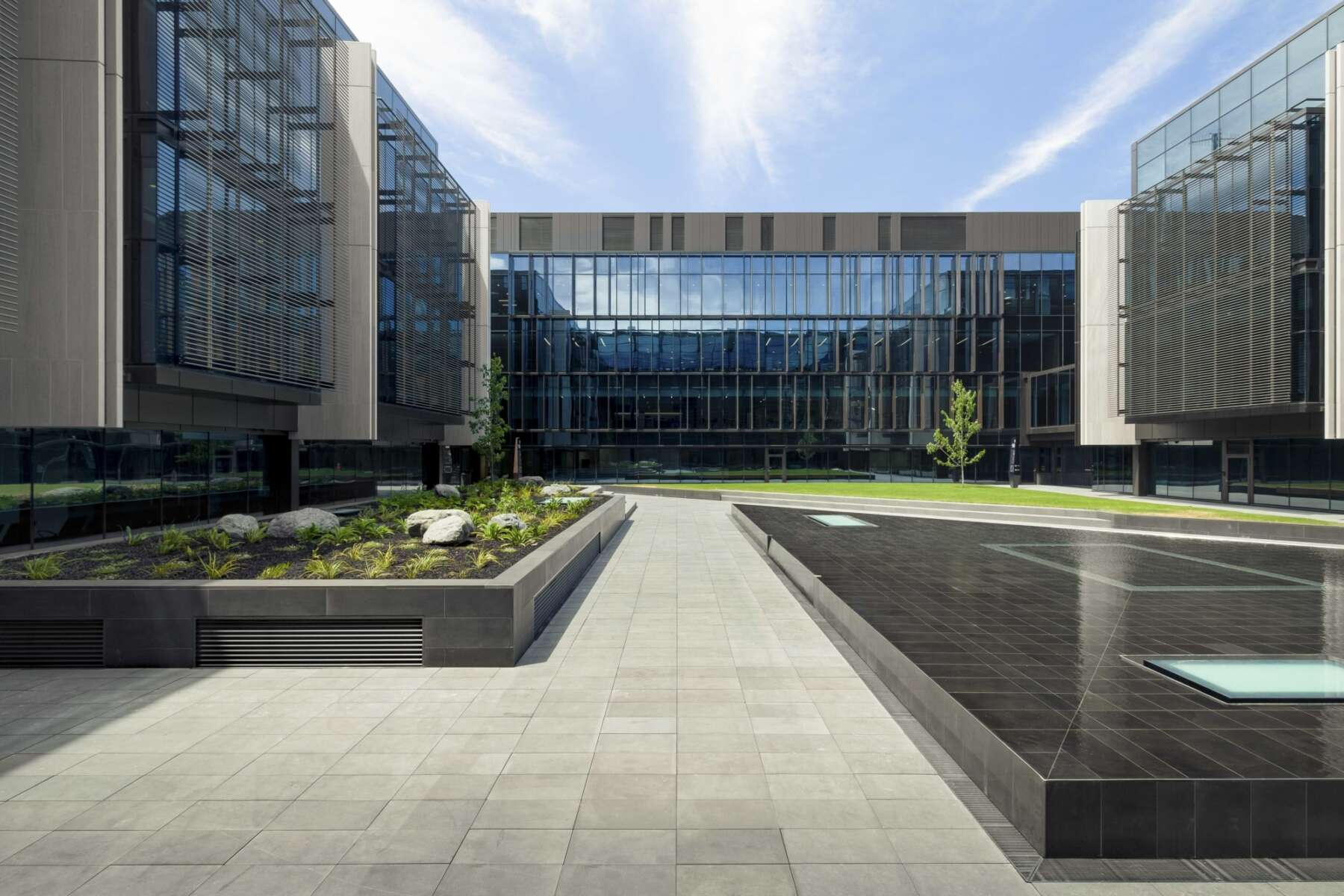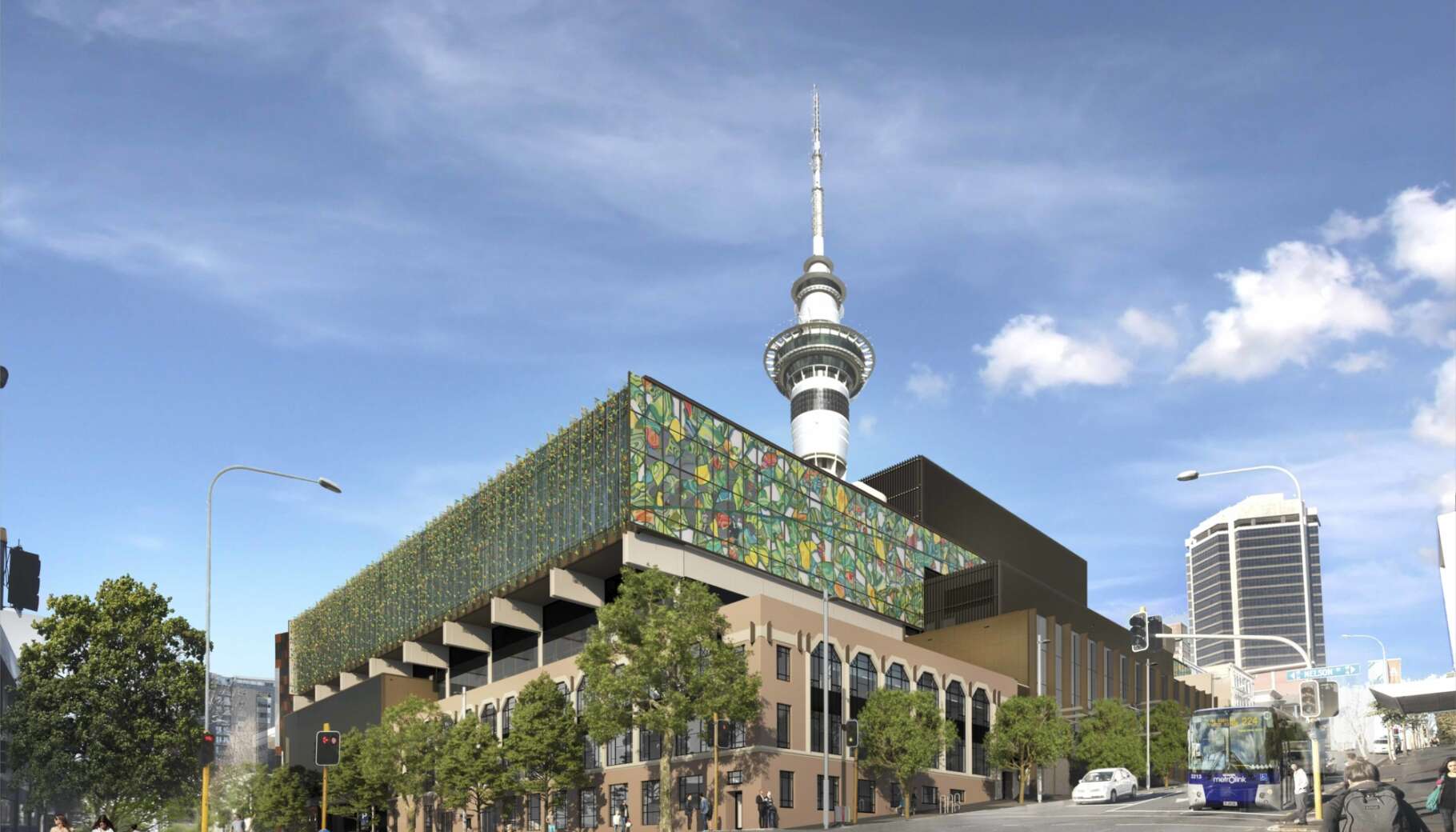A human-centric Justice and Emergency Precinct that incorporated, rather than excluded, our culture and communities at a difficult time.
The Christchurch Justice and Emergency Services Precinct (CJESP) is the largest combined justice and emergency services facility in Australasia and is the first government funded anchor project to be constructed as a key component of the Christchurch Blueprint for recovery, generated as a result of the devastating earthquakes of 2010 and 2011.
The 40,000m2 precinct houses 19 courtrooms, a state of the art emergency operations centre, and new facilities for Police, Corrections, Fire Service, St John, and the Emergency Management teams of the Ministry of Civil Defence, Christchurch City Council and Environment Canterbury.
The precinct is designed to IL 4 standard ensuring that it will withstand significant seismic events and remain in operation to provide central services to the Christchurch community.
The precinct delivers on the New Zealand Ministry of Justice requirement for facilities to not only offer more effective operations and inter-agency collaboration but also higher levels of amenity for the public who use the building on a daily basis. The facility is transformative, breaking away from the 19th and 20th century traditions of defensive and 'exclusive' architecture and embracing a more open, transparent and connected environment.
This building, without local precedent, encompasses many public functions necessary for society to work well. Formally ordered to the last sun louvre, it has a palate of materials that suggests endurance. In court, it is perfectly permissible to seek clarification of any ruling. In this instance the ruling is good; this is a well-conceived and beautifully constructed project.
Warren and Mahoney (lead architect) in association with Cox Architecture and Opus Architecture.
In 2011, a devastating series of earthquakes destroyed the city centre of Christchurch, New Zealand’s third-largest city. Included in the damage was the bulk of the city’s civic and social infrastructure.
Warren and Mahoney was commissioned as part of the team that would create a new masterplan for the reconstruction of the city centre, including 16 government-funded “anchor projects” intended to create commercial confidence in Christchurch, and develop a new vision for the future identity and form of the city.
Part of the Blueprint for Recovery launched by the New Zealand government in 2012, the new Justice and Emergency Precinct (CJESP) is a core anchor project within this masterplan.
The development of the CJESP’s location, scale and operational philosophy also represented an opportunity to completely reconsider the relationship between the justice system, police and the public, as well as the interaction between the various emergency services agencies.
One of the most important factors steering this development was the Ministry of Justice’s over-arching vision for a more open, less formidable relationship between the public and physical justice environments.
Secondly, the Ministry saw opportunities for increased operational flexibility and efficiency through the co-location of courts, police and emergency services within a building cluster, while also recognising the independence of the judiciary and the various levels of security required by each entity.
The underlying ambition was to create an environment that would operate as a thoroughly public building, while also providing the architectural gravitas and security expected of a major civic investment.

Courts Building
Generally, the traditional architecture of courts and police buildings designed in the 19th and 20th centuries, whether neo-classical or modernist, is densely massed and visually impenetrable, and deliberately conveys an intimidating sense of authority.
By contrast, the architects employed a design approach for the CJESP that inverts this by openly inviting the public into the precinct. Its basic framework was laid out with public entry into and movement around the complex as the primary design driver.
Once this framework was established, the placement of key operational spaces and buildings was determined. The architects endeavoured to meet not only the standard functional and security requirements, but to offer best-practice interior environments for those visiting and working in the buildings.
In comparison to traditional judicial building types, the buildings in the CJESP have been pulled apart and re-oriented to create a much narrower and linear building footprint, along a publicly accessible spine. These operational spaces run down one side, and public circulation is on the other.
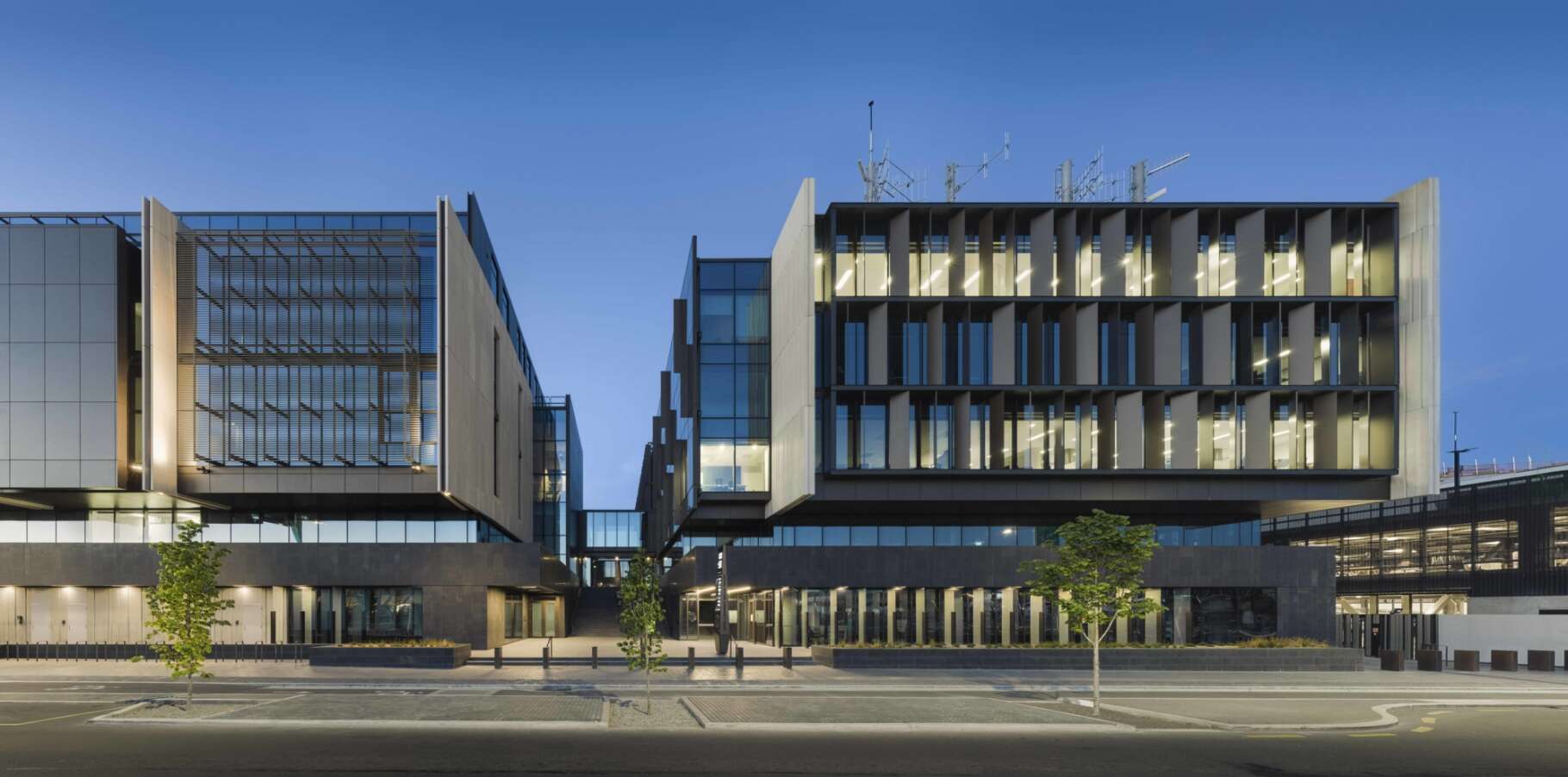
One of the most important factors steering this development was the Ministry of Justice’s over-arching vision for a more open, less formidable relationship between the public and physical justice environments
Foyer, waiting and circulation spaces are arranged around a central, light-filled courtyard, which adopts the “framed open square” layout so familiar to the people of Christchurch.
This strategy ensures that all public spaces and internal public circulation paths have natural light and views, while also allowing the 19 courtrooms within the building to enjoy natural light and an outlook into the surrounding city.
The two Main Street addresses are connected by an atrium. This has a full-height, glazed wall on one side and opens directly into the central, landscaped courtyard, which connects the interior to the outside world and provides a powerful orientation point for those navigating the large complex.
Inside the atrium, there are hospitality, waiting and customer-service areas. Way-finding was a priority, and is embedded into the internal design of the atrium, with clear lines of sight to stairs, lifts and the transverse bridges on the upper levels that link the main building components.
This combination of design strategies is intended to decrease stress in situations that can be innately difficult for both visitors and occupants in the courts environment.
Emergency Services
One of the key objectives in the government’s business case for the precinct was to foster collaboration and operational and spatial efficiency.
Partly in response to the unexpected devastation wrought by the earthquake, the new facility is also designed to provide the opportunity for New Zealand’s first multi-agency Emergency Operations Centre.
Here, careful planning is seamlessly linked to the everyday workspace and functions of each agency, ensuring the space is used on a continual basis and ready to adapt to manage the city’s response to not just earthquakes but any emergency facing Christchurch and its surrounding regions.
To support this role, the building has a base-isolated structure and mechanical/electrical services to enable continuous standalone operation for at least 72 hours.
Across the precinct, the material palette was carefully considered to convey permanence and ‘civic weight’ in a contemporary way that is attuned to the site and the city.
Bronze aluminium, natural stone, glass and timber have all been used in a way that provides legibility of the basic layering of the buildings.
A dark, natural stone forms the external ground plane from the street edge, folding up around the building and rising to cap the ground floor and pave the atrium and external courtyard. This material and surface denotes public space within the precinct.
The first floor, which is bounded by full-height glazing, is the primary public interface, and forms a visual break to the light-coloured, limestone-clad forms above that bookend each of the courtrooms on the upper levels of the courts building.
Timber-battened soffits and ceiling panels provide a softer contrast to the stone and glass, and are used again to delineate the public spaces within the precinct.
The Emergency Services Building shares a common design philosophy with the courts, but has subtly different materials and an architectural language carefully tuned to reflect the relative status of the ‘civic’ and ‘service’ wings of the complex.
More importantly, this difference gives external expression to the necessary constitutional separation between police and an independent judiciary.
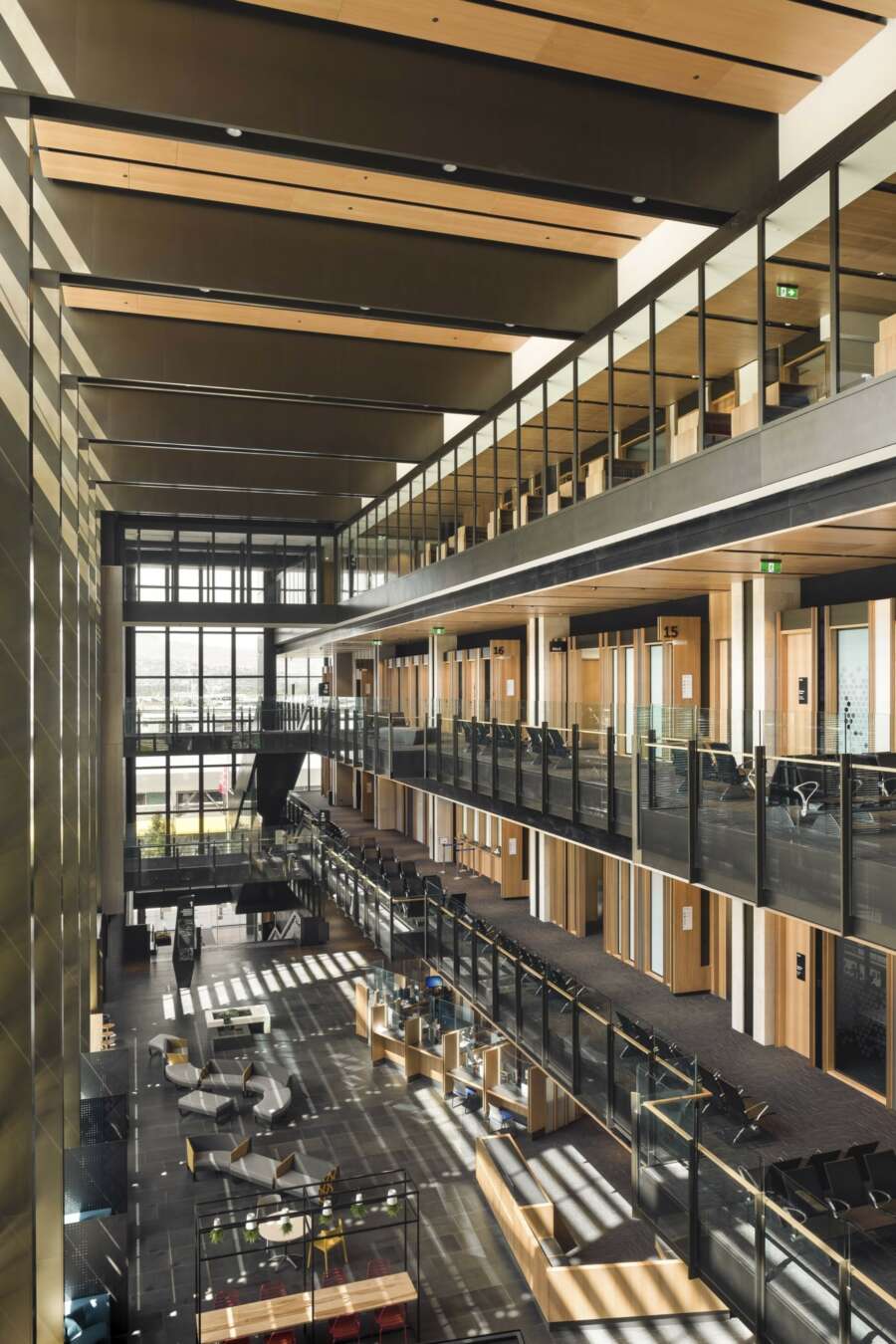
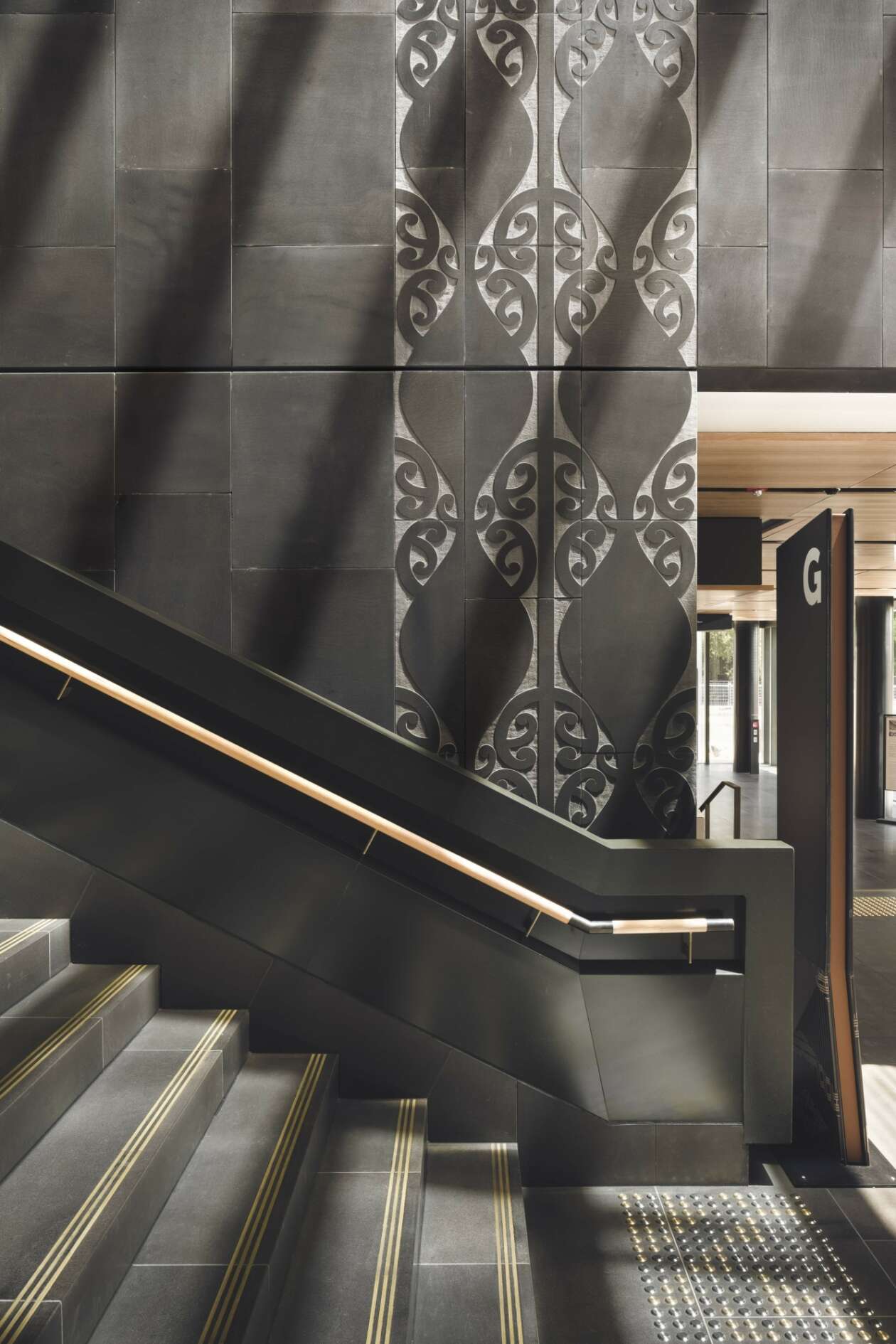
Cultural Significance
Christchurch’s local iwi, Ngāi Tūāhuriri gifted the name Te Omeka to the Ministry of Justice, representing a visual embodiment of its partnership and contribution as an important rebuild participant.
“The Omeka is a legacy left by the people of Ngāi Tūāhuriri. It asks that our hearts and minds and different faiths be bound as one to the law of Crown and Queen so that the Treaty may speak to us all,” says Dr Te Maire Tau, Upoko of Ngāi Tūāhuriri.
Ngāi Tūāhuriri acted as consultants on the design. Two Ngāi Tahu artists were also appointed to produce bespoke artwork that was integrated into the fabric of the building, lending it further gravitas and relevance, and connecting to the region it serves.
Lonnie Hutchinson worked on the exterior artwork, producing a delicately sculpted metal shroud to drape the emergency services parking building.
Her design references a kakapo feather cloak, an extremely rare and culturally significant item for Maori due to the near-extinct status of the bird. Along the Durham Street elevation, west-facing double-skin windows, fritted to control solar gain from the afternoon sun, are imprinted with a stylised image of the huia bird’s feather, alluding to an alliance formed in 1936 between Ngāi Tahu and the crown.
The elements include patterns and designs that are specific to and recognisably of Ngāi Tuahuriri origin, providing a comforting familiarity to those visiting and using the precinct.
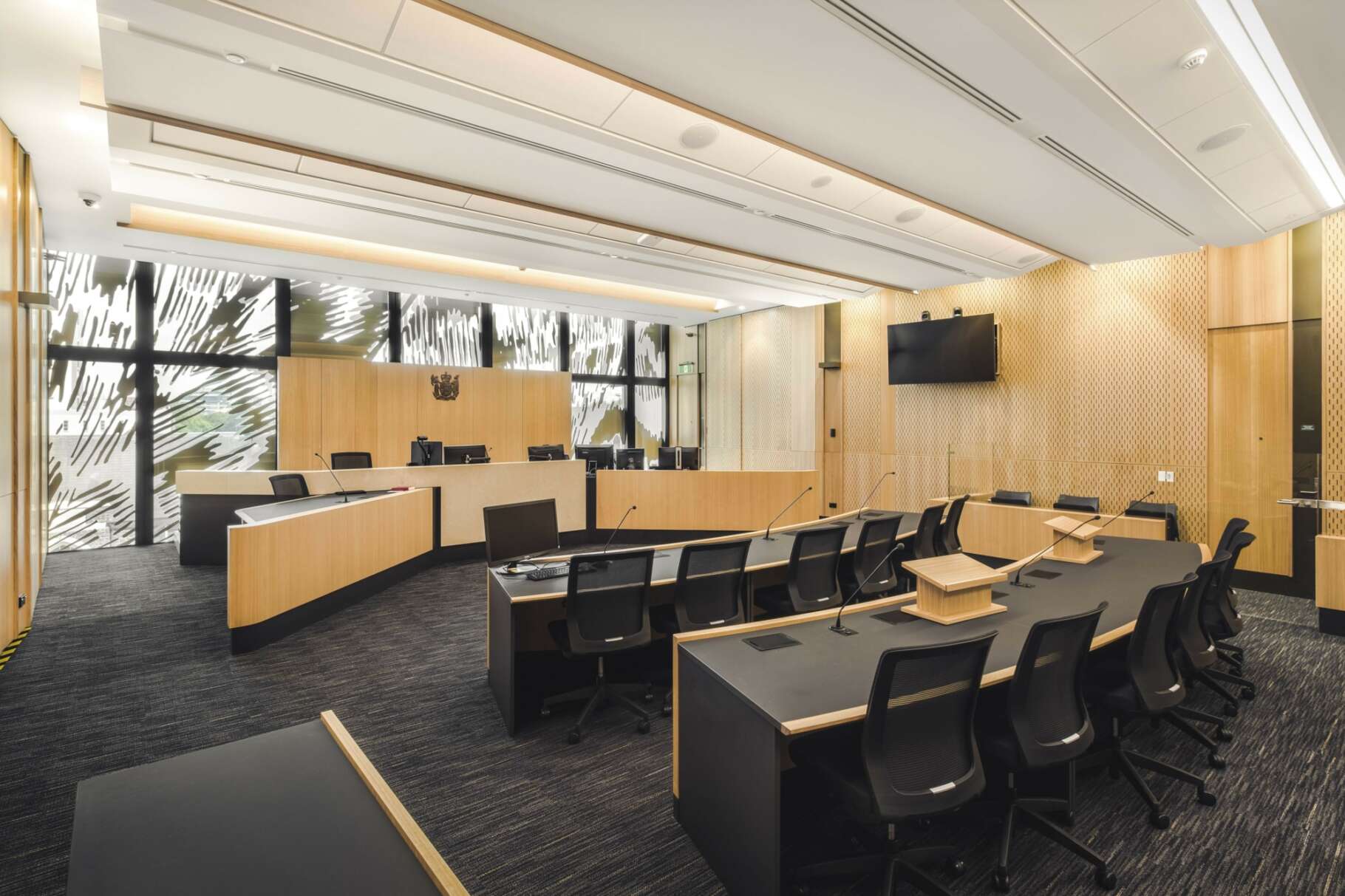
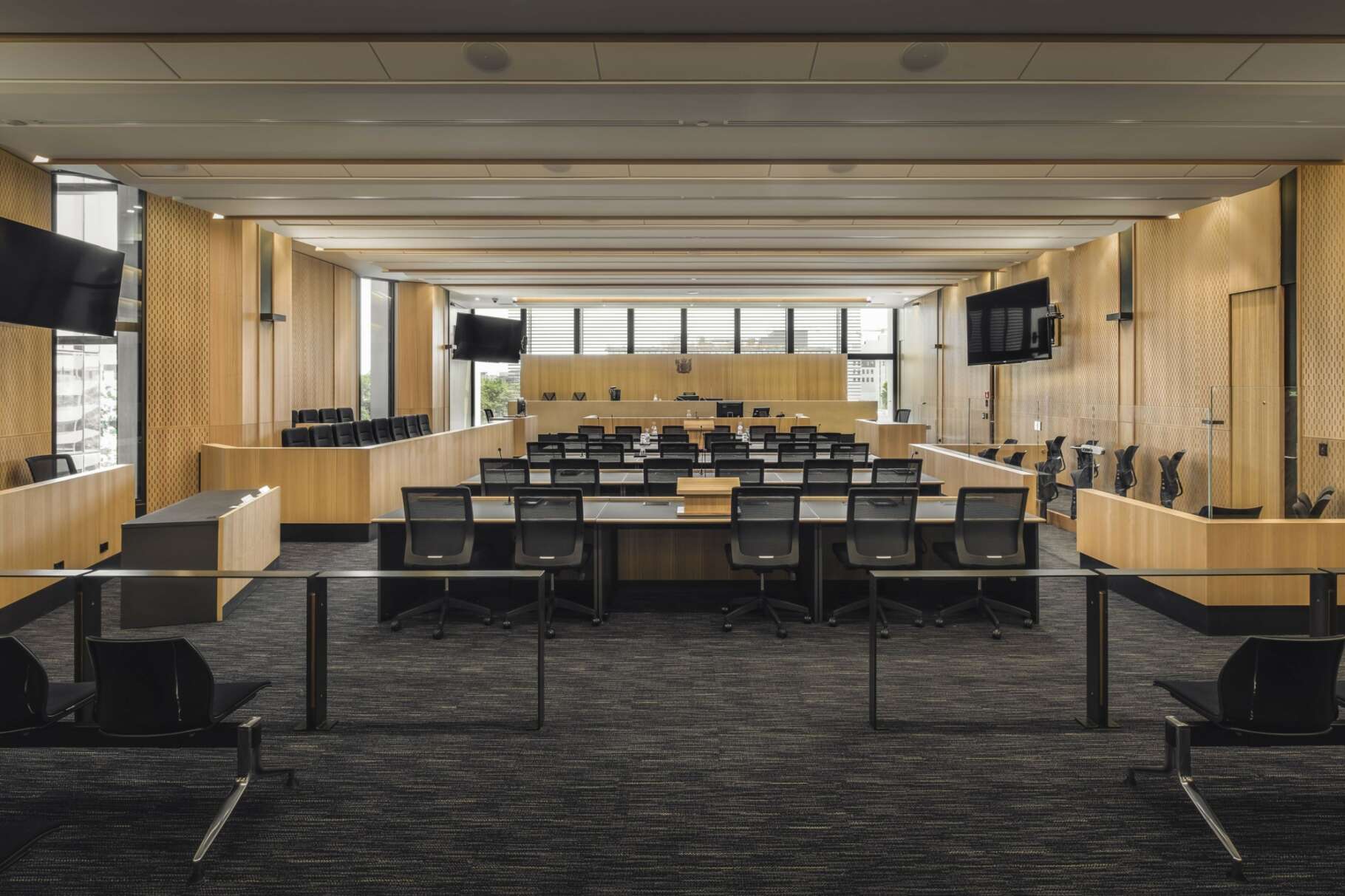
The interior artworks were developed by the renowned master-carver Fayne Robinson. They were incorporated into the materials and finishes of the building, in the shape of etched stone wall-panels and geometrically patterned floor studs, which are markers of the four main entry thresholds.
Robinson’s carved timber door handles provide a tactile entry to the courtrooms, while perforated timber and metal ceilings provide important acoustic absorption in the large public spaces.
All of these elements include patterns and designs that are specific to and recognisably of Ngāi Tūāhuriri origin, providing a comforting familiarity to those visiting and using the precinct.
The complex is the first major government building to be completed in the rebuilding of Christchurch City and is symbolic of the government’s commitment to the city and its people, providing a clear anchor to the central business district.
“Ngāi Tūāhuriri are proud of the elements depicted and the visual representation of our history, art and traditions,” says Dr Tau. “We encourage people to visit Te Omeka for the pure experience of viewing the art work and understanding better the role we each have to play in the rebuild process.”
